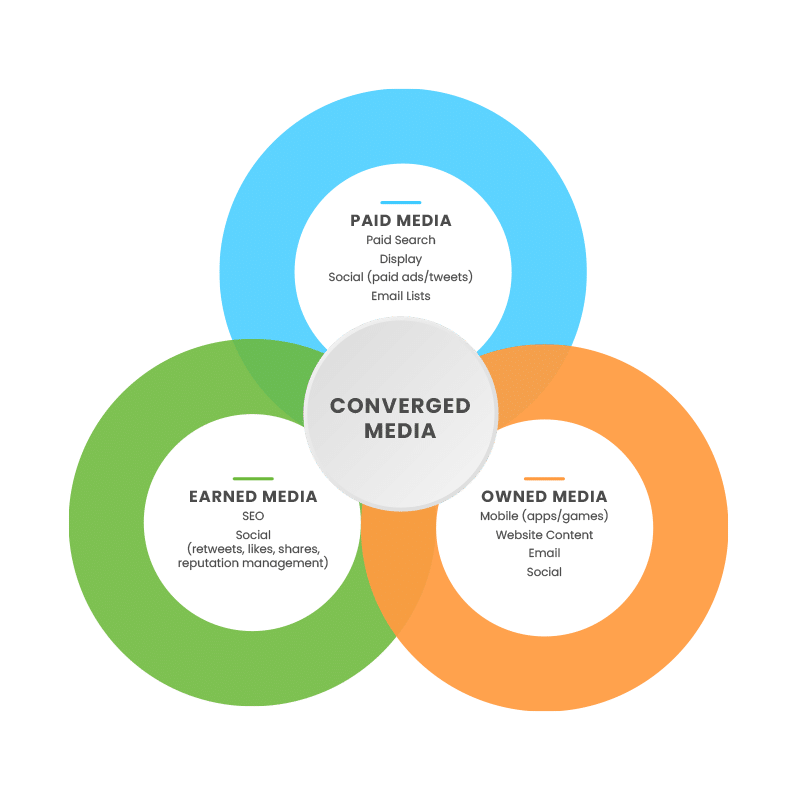As we frequently underscore at CURA—strategic health care communications is more than delivering a message. It’s about ensuring the right people hear it, understand it and act on it. In a crowded, highly regulated environment, cutting through the noise to connect with patients, caregivers, providers and policymakers, is no small feat.
We see the transformative power of paid media every day through the campaigns we craft for our clients. When done thoughtfully, it amplifies campaigns—scaling outcomes that make a real and measurable impact.

Here are four reasons why paid media is no longer a ‘nice to have’ for integrated communications in health care organizations, but essential.
1. Reaches the Right Audiences with Precision
Health care audiences are diverse and nuanced. Whether it’s a policymaker introducing new legislation, a patient learning about their diagnosis, or a patient advocacy group searching for members, you need to connect with the right people at the right time through the right medium. Paid media platforms like Meta Business and Google Ads, among many others, make this possible, in strides.
Take a campaign to educate patients on screening for a very rare disease: Instead of casting a wide, expensive net and wasting dollars on such a niche target group, paid media allows you to laser-focus on patients, caregivers, advocacy group, or specialists within that specific rare disease’s digital space. You can target by interests, behaviors, or even online communities where related conversations are happening in real-time. Precision targeting ensures every dollar works harder, reaching those who need your message most.
Pro Tip: Niche audience targeting tools such as LeadEnforce can help you pinpoint users in groups across social media platforms and directly serve them ads as they browse Meta products like Facebook, Messenger and WhatsApp.
2. Fills the Gaps Left by Earned and Owned Media
Earned and owned media are cornerstones of any health care communications strategy but they have limitations:
- Earned media builds credibility, but there’s no guarantee the right people will see it.
- Owned media offers depth, but audiences must already know where to look to find you.
Paid media bridges this gap. For example, boosting an earned media placement ensures your hard-won coverage reaches stakeholders who matter most. Similarly, amplifying a blog or webinar can drive new traffic of that specific blog audience to your owned channels.
Think of paid media as your amplifier. It doesn’t replace earned and owned—it makes them louder, sharper and more effective in reaching your audiences.
3. Provides Actionable Insights to Prove and Improve ROI
In health care, as in any other industry, every dollar matters. Paid media offers real-time metrics to measure success, refine strategies and maximize impact.
Want to know which message resonates better with clinicians versus patients? Test two ad creatives and let the data decide. Curious how paid traffic behaves on your site compared to organic? Tools like Google Analytics 4 (GA4) and Hotjar provide insights to optimize not only your ads but your entire digital presence. Want to know how users behave after they click on your ad? Check our GA4 funnels and use HotJar to follow your web viewers through their journey through your website. This shows where users may be clicking off the page, what is retaining their attention and what may need to be adjusted to maximize impact.
Pro Tip: If a campaign isn’t delivering meaningful conversions or clicks once they land on your page from an ad click, check to see what users are doing after they land on the page using tools like HotJar and GA4. This will reveal whether the audience is not a good fit or if the page is the culprit and may need optimization.
4. Scalable for Time-Sensitive Needs
Whether launching a new therapy, responding to a public health crisis, or rallying support for a policy change, paid media offers speed and scale. Unlike other media types, paid can start serving ads and generating results immediately within hours.
With paid campaigns, you can start small, gather insights and scale up quickly with confidence due to performance analytics. Ad platforms provide predictive models that show how incremental budget increases drive additional results—making it easy to adjust based on your needs and goals. You can fine-tune your budget based on the results the platform predicts you will achieve.
Pro Tip: Start with a pilot campaign to test the waters and gain learnings to inform changes to your main campaign. Once refined and optimized, you are ready to scale!
Tips for Weaving Paid Media into Your Integrated Strategy
Paid media doesn’t exist in a silo—it’s the thread that ties your entire communications strategy together. Consider these real-world applications:
- Promote content: Amplify whitepapers, webinars or research to extend their reach.
- Drive advocacy: Mobilize communities or engage policymakers with tailored paid media campaigns.
- Enhance PR efforts: Boost earned media to ensure it reaches high-priority audiences when and where they are ready to receive it.
Pro Tip: Beyond mainstream platforms like LinkedIn, Meta and X, there are health care-focused marketing platforms like Definitive Healthcare that offer hyper niche targeting towards finding physicians of all specialties, which can be used in your ad or email marketing campaign. To target users involved in real-time conversations on certain topics, Reddit Business now offers keyword and subreddit (/r) targeting to serve ads to users directly in these subreddits as conversations occur.
When integrated thoughtfully, paid media isn’t just about clicks or impressions. It’s about driving meaningful changes in health care that ultimately improves lives—and that is always our ultimate goal we work with clients to achieve.
Need help with your next impactful campaign? Drop us a line! We’re here to help you mobilize your mission.
Adrian Dipple
Associate Vice President, Digital Marketing
CURA Strategies
